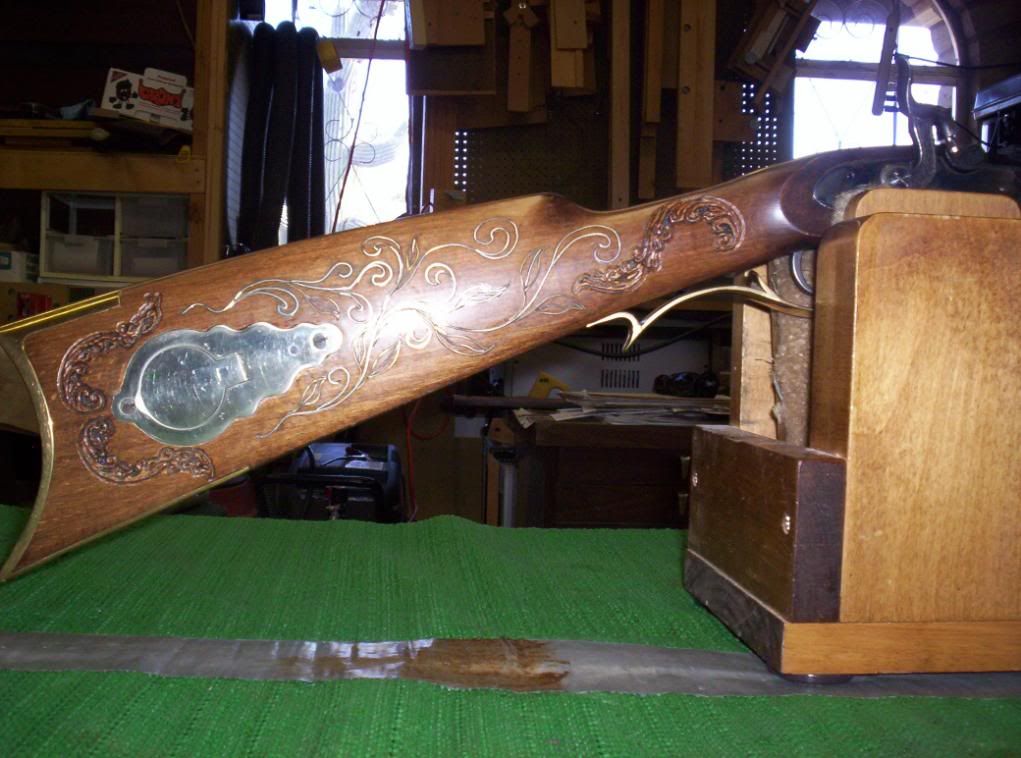I would like to thank all of the members who have commented on my repair of Don’s old rifle. One thing about this forum, ask for advice, and you’re gonna get it, even some you didn’t ask for. When Don mentioned that he might like to fire the rifle a few times, I told him I’d run it by the forum members, explain the fix, and see what they thought””to shoot it or hang it up. The answers seemed to be, “yes” and “yes.”
I know that most of you have grasped the importance of this rifle to Don for his family. Money doesn’t enter in at all. They will get some pictures when they get together over Christmas, we will get a few more when we shoot the rifle. These pictures can follow along with the rifle through the generations, God willing.
I’ve worked wood as a hobby for many years. I believe that the repair of wood screws and epoxy resin interlock will stand up well for normal show-and-tell, but maybe not for any regular shooting. The recoil from the usual charges in this cal. is zilch, but the continued ramming home a patched ball could do some damage. Why take the chance?
So we’ll proceed along the lines that Zonie suggested, about 20 grains of 3F and a couple of felt wads, touch it off, and inspect.
To load some lead we can do the same thing and then put the rifle in my cleaning vice like in the picture of my Crockett.
This will grab the rifle ahead of the break and we can seat the ball horizontally. Maybe try some heavy patched 32’s to start. Work up to some thin patched 000 buckshot. That oughta be enough. Just so we can get a few pictures of Don shooting the rifle so his grandkids can say, “That’s Grandpa Don!” Then his great-grandkids, then his great-great grandkids”¦ That’s the tradition we’re looking for.
I would like to close this post by commenting on a few of the replies that I take exception to.
The rather cavalier comment that so-and-so could have EASILY joined the wrist break without destroying the rifle’s Antique Roadshow value doesn’t make sense. When gorilla glue sets up out in the open, it foams up like a rock-hard sponge. No way could you get the two sides anywhere close to coming together. Getting that gorilla glue out of both sides of the break was not EASY and it would not have been easy for anybody. As to removing the “Black Patina” I would refer anyone to pages 326 and 327 in the “The Gunsmith of Grenville Country” by Peter Alexander. For those of you who don’t have this book, I’ll relate the pertinent concepts. Mr. Alexander tells how George Shumway (THE George Shumway, I believe) told him how to remove that 100 years of oxidation which he labeled “in attic condition.” He used Brasso and water to bring out the finish that was there when the gun was put up. In addition, the article further points out that NOONE can say for certain that whatever comes up is the original finish. These were working guns, with a not-so-durable original finish and may have been re-finished a number of times before being put away in the attic.




These are pictures of my flinter. It has a hand-rubbed linseed oil finish like many of the old rifles. The last coat was rubbed in exactly one week before the Javelina season started in ’63. That’s only a little over 40 years. The rifle has never seen an attic and has already started to turn black. All the beautiful colors from the potassium permanganate stain are so muted; you wouldn’t know they are there. After the holidays, out comes the Easy-Off, or maybe I’ll do the Brasso bit like George Shumway suggested.
Anyway, I think we “done did the right thing” and I believe Don’s family will agree for many generations.
Thank you for your patience and Merry Christmas!
Sincerely,
Wirewiz










